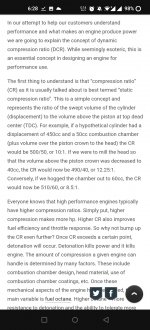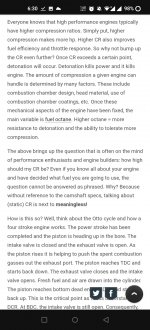1980s V8 engines in good health make it with 8.5:1 CR. I have less experience with newer engines but likely the increase in compression ratio is also accompanied by higher lift cam profile which probably offsets the higher compression giving a similar dynamic compression ratio. It's been a long time since I read up on this so hopefully I'm explaining it right.
Edit: I researched it again and it's only the intake valve closing point that has an effect (as far as camshaft profile) along with the static compression, atmospheric pressure, oil temperature, cranking speed (my battery was just charged up and it cranks extremely fast), whos compression tester you use, and many other factors. It sounds like it isn't a real reliable or consistent test anyway and a leakdown test is a better indicator of engine health. I would almost bet my compression test was a fluke and I could check it tomorrow and get 110 or something like that. Either way I'm not worried about the engine health at this point. Hopefully the new carb fixes the cold start issue.



